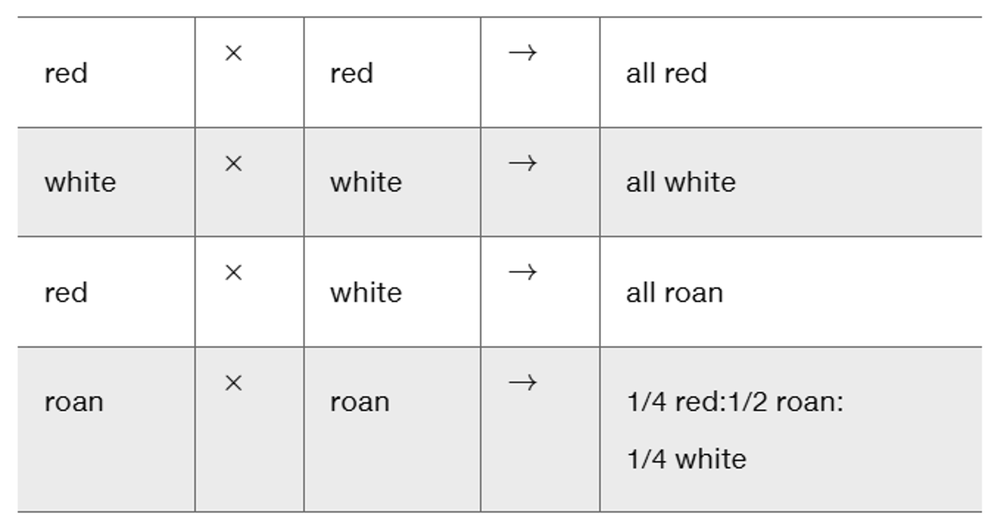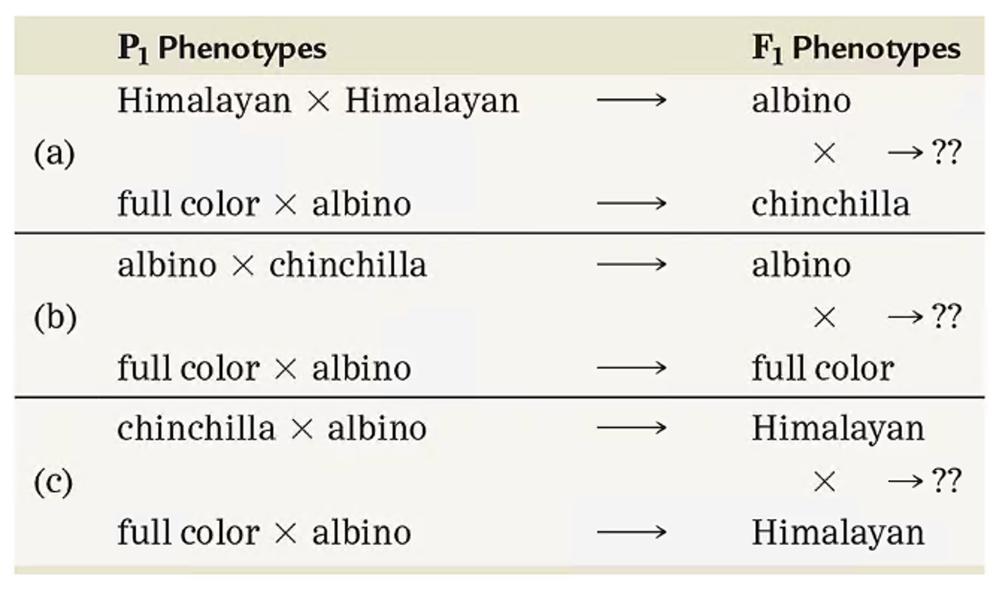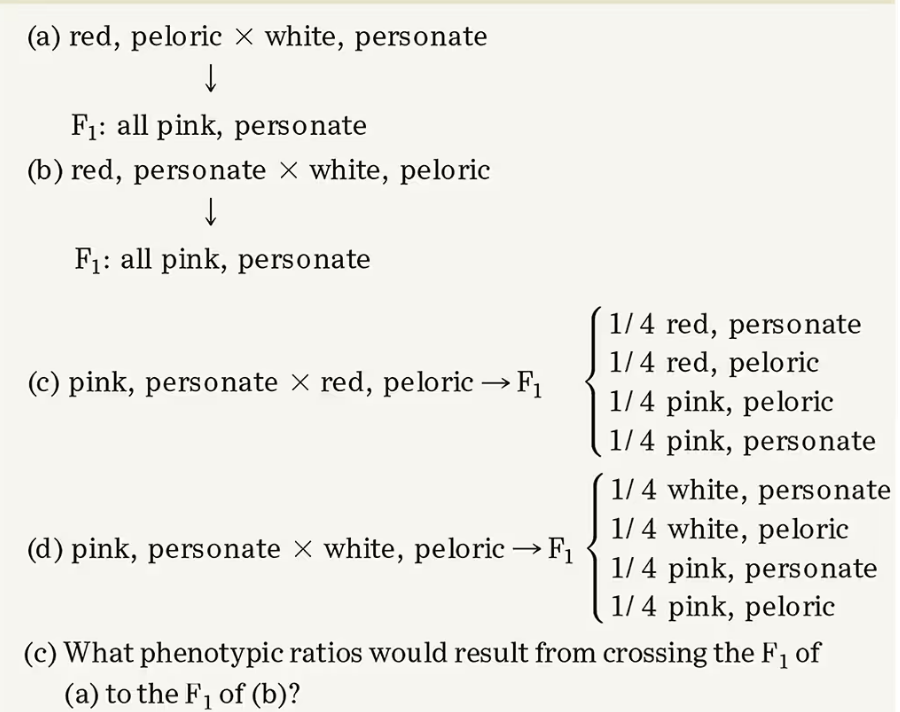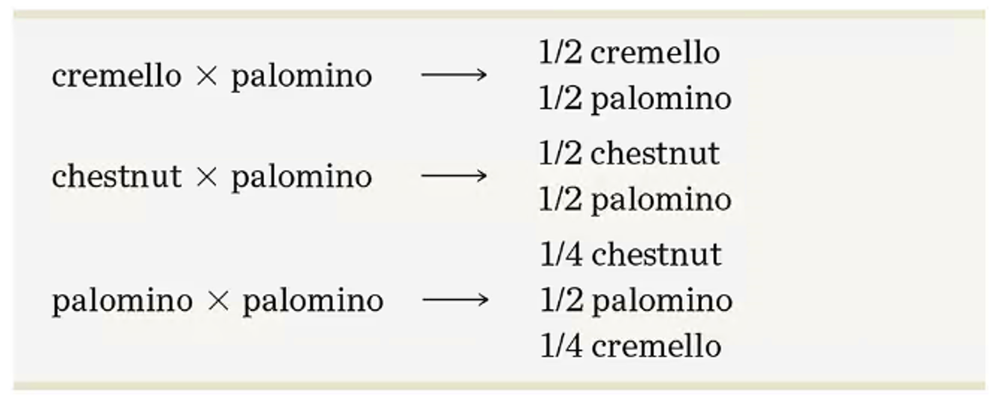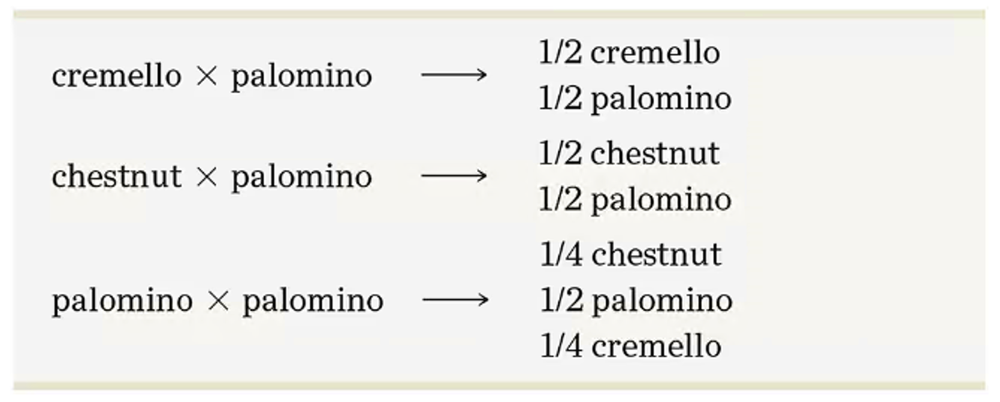 Back
BackProblem 1a
How were early geneticists able to ascertain inheritance patterns that did not fit typical Mendelian ratios?
Problem 1b
In the discussion, we focused on extensions and modifications of Mendelian principles and ratios. In the process, we encountered many opportunities to consider how this information was acquired. On the basis of these discussions, what answers would you propose to the following fundamental questions?
How did geneticists determine that inheritance of some phenotypic characteristics involves the interactions of two or more gene pairs? How were they able to determine how many gene pairs were involved?
Problem 1c
The discussion centers on extensions and modifications of Mendelian principles and ratios. In the process, we encountered many opportunities to consider how this information was acquired. On the basis of these discussions, what answers would you propose to the following fundamental questions?
How do we know that specific genes are located on the sex-determining chromosomes rather than on autosomes?
Problem 1d
The discussion centers on extensions and modifications of Mendelian principles and ratios. In the process, we encountered many opportunities to consider how this information was acquired. On the basis of these discussions, what answers would you propose to the following fundamental questions?
For genes whose expression seems to be tied to the sex of individuals, how do we know whether a gene is X-linked in contrast to exhibiting sex-limited or sex-influenced inheritance?
- Write a short essay that explains why multiple and lethal alleles often result in a modification of the classic Mendelian monohybrid and dihybrid ratios.
Problem 2
Problem 3
In shorthorn cattle, coat color may be red, white, or roan. Roan is an intermediate phenotype expressed as a mixture of red and white hairs. The following data were obtained from various crosses:
How is coat color inherited? What are the genotypes of parents and offspring for each cross?
Problem 4
In foxes, two alleles of a single gene, P and p, may result in lethality (PP), platinum coat (Pp), or silver coat (pp). What ratio is obtained when platinum foxes are interbred? Is the P allele behaving dominantly or recessively in causing (a) lethality; (b) platinum coat color?
- In mice, a short-tailed mutant was discovered. When it was crossed to a normal long-tailed mouse, 4 offspring were short-tailed and 3 were long-tailed. Two short-tailed mice from the F1 generation were selected and crossed. They produced 6 short-tailed and 3 long-tailed mice. These genetic experiments were repeated three times with approximately the same results. What genetic ratios are illustrated? Hypothesize the mode of inheritance and diagram the crosses.
Problem 5
- List all possible genotypes for the A, B, AB, and O phenotypes. Is the mode of inheritance of the ABO blood types representative of dominance, recessiveness, or codominance?
Problem 6
Problem 7
With regard to the ABO blood types in humans, determine the genotype of the male parent and female parent shown here:
Male parent: Blood type B; mother type O
Female parent: Blood type A; father type B
Predict the blood types of the offspring that this couple may have and the expected proportion of each.
- In a disputed parentage case, the child is blood type O, while the mother is blood type A. What blood type would exclude a male from being the father? Would the other blood types prove that a particular male was the father?
Problem 8
Problem 9a
The A and B antigens in humans may be found in water-soluble form in secretions, including saliva, of some individuals (Se/Se and Se/se) but not in others (se/se). The population thus contains 'secretors' and 'nonsecretors.'
Determine the proportion of various phenotypes (blood type and ability to secrete) in matings between individuals that are blood type AB and type O, both of whom are Se/se.
Problem 9b
The A and B antigens in humans may be found in water-soluble form in secretions, including saliva, of some individuals (Se/Se and Se/se) but not in others (se/se). The population thus contains 'secretors' and 'nonsecretors.'
How will the results of such matings change if both parents are heterozygous for the gene controlling the synthesis of the H substance (Hh)?
Problem 10
In chickens, a condition referred to as 'creeper' exists whereby the bird has very short legs and wings and appears to be creeping when it walks. If creepers are bred to normal chickens, one-half of the offspring are normal and one-half are creepers. Creepers never breed true. If bred together, they yield two-thirds creepers and one-third normal. Propose an explanation for the inheritance of this condition.
Problem 11
In rabbits, a series of multiple alleles controls coat color in the following way: C is dominant to all other alleles and causes full color. The chinchilla phenotype is due to the cch allele, which is dominant to all alleles other than C. The ch allele, dominant only to (albino), results in the Himalayan coat color. Thus, the order of dominance is C > cch > ch > ca. For each of the following three cases, the phenotypes of the P1 generations of two crosses are shown, as well as the phenotype of one member of the F1 generation.
For each case, determine the genotypes of the P1 generation and the F1 offspring, and predict the results of making each indicated cross between F1 individuals.
Problem 12
Three gene pairs located on separate autosomes determine flower color and shape as well as plant height. The first pair exhibits incomplete dominance, where the color can be red, pink (the heterozygote), or white. The second pair leads to personate (dominant) or peloric (recessive) flower shape, while the third gene pair produces either the dominant tall trait or the recessive dwarf trait. Homozygous plants that are red, personate, and tall are crossed to those that are white, peloric, and dwarf. Determine the F₁ genotype(s) and phenotype(s). If the F₁ plants are interbred, what proportion of the offspring will exhibit the same phenotype as the F₁ plants?
Problem 13
Flower color may be red, white, or pink, and flower shape may be personate or peloric. For the following crosses, determine the P₁ and F₁ genotypes:
Problem 14a
Horses can be cremello (a light cream color), chestnut (a brownish color), or palomino (a golden color with white in the horse's tail and mane). Of these phenotypes, only palominos never breed true.
From the results given above, determine the mode of inheritance by assigning gene symbols and indicating which genotypes yield which phenotypes.
Problem 14b
Horses can be cremello (a light cream color), chestnut (a brownish color), or palomino (a golden color with white in the horse's tail and mane). Of these phenotypes, only palominos never breed true.
Predict the F1 and F2 results of many initial matings between cremello and chestnut horses.
Problem 15a
With reference to the eye color phenotypes produced by the recessive, autosomal, unlinked brown and scarlet loci in Drosophila, predict the F₁ and F₂ results of the following P₁ crosses. (Recall that when both the brown and scarlet alleles are homozygous, no pigment is produced, and the eyes are white.)
Wild type x White
Problem 15b
With reference to the eye color phenotypes produced by the recessive, autosomal, unlinked brown and scarlet loci in Drosophila, predict the F₁ and F₂ results of the following P₁ crosses. (Recall that when both the brown and scarlet alleles are homozygous, no pigment is produced, and the eyes are white.)
Wild type x Scarlet
Problem 15c
With reference to the eye color phenotypes produced by the recessive, autosomal, unlinked brown and scarlet loci in Drosophila, predict the F₁ and F₂ results of the following P₁ crosses. (Recall that when both the brown and scarlet alleles are homozygous, no pigment is produced, and the eyes are white.)
Brown x White
Problem 16a
Pigment in mouse fur is only produced when the C allele is present. Individuals of the cc genotype are white. If color is present, it may be determined by the A, a alleles. AA or Aa results in agouti color, while aa results in black coats. What F₁ and F₂ genotypic and phenotypic ratios are obtained from a cross between AACC and aacc mice?
Problem 16b
Pigment in mouse fur is only produced when the C allele is present. Individuals of the cc genotype are white. If color is present, it may be determined by the A, a alleles. AA or Aa results in agouti color, while aa results in black coats. In three crosses between agouti females whose genotypes were unknown and males of the aacc genotype, the following phenotypic ratios were obtained:
(1) 8 agouti
(2) 9 agouti
(3) 4 agouti, 8 white 10 black, 5 black, 10 white
Problem 17a
In rats, the following genotypes of two independently assorting autosomal genes determine coat color:
A third gene pair on a separate autosome determines whether or not any color will be produced. The CC and Cc genotypes allow color according to the expression of the A and B alleles. However, the cc genotype results in albino rats regardless of the A and B alleles present. Determine the F₁ phenotypic ratio of the following crosses:
AAbbCC×aaBBcc
Problem 17c
In rats, the following genotypes of two independently assorting autosomal genes determine coat color:
A third gene pair on a separate autosome determines whether or not any color will be produced. The CC and Cc genotypes allow color according to the expression of the A and B alleles. However, the cc genotype results in albino rats regardless of the A and B alleles present. Determine the F₁ phenotypic ratio of the following crosses:
AaBbCc×AaBbcc
Problem 17d
In rats, the following genotypes of two independently assorting autosomal genes determine coat color:
A third gene pair on a separate autosome determines whether or not any color will be produced. The CC and Cc genotypes allow color according to the expression of the A and B alleles. However, the cc genotype results in albino rats regardless of the A and B alleles present. Determine the F₁ phenotypic ratio of the following crosses: AaBBCc×AaBBCc
Problem 17e
In rats, the following genotypes of two independently assorting autosomal genes determine coat color:
A third gene pair on a separate autosome determines whether or not any color will be produced. The CC and Cc genotypes allow color according to the expression of the A and B alleles. However, the cc genotype results in albino rats regardless of the A and B alleles present. Determine the F₁ phenotypic ratio of the following crosses:
AABbCc×AABbcc
Problem 18a
Given the inheritance pattern of coat color in rats described in Problem 17, predict the genotype and phenotype of the parents who produced the following offspring:
9/16 gray: 3/16 yellow: 3/16 black: 1/16 cream
Problem 18b
Given the inheritance pattern of coat color in rats described in Problem 17, predict the genotype and phenotype of the parents who produced the following offspring:
9/16 gray: 3/16 yellow: 4/16 albino

